Meaning of the Different Knots in Kyoto Kimono Culture
- Introduction: A Glimpse into Kyoto’s Kimono Legacy
- 1. What Is an Obi? Origins and Role in Kimono Dress
- 2. Types of Obi in Kyoto Tradition
- 3. Common Obi Knots (Musubi) & Their Meanings
- 4. Symbolism, Formality & Social Cues
- 5. Step-by-Step: How to Tie a Simple Taiko Musubi
- 6. How to Photograph an Obi Knot in Kyoto
- 7. SEO Strategy: Keywords, Structure, and Internal Linking
- 8. Practical Tips for Tourists & Kimono Enthusiasts in Kyoto
- 9. Sample Call-to-Action & Promotional Section
- 10. Conclusion & Encouragement
Introduction: A Glimpse into Kyoto’s Kimono Legacy
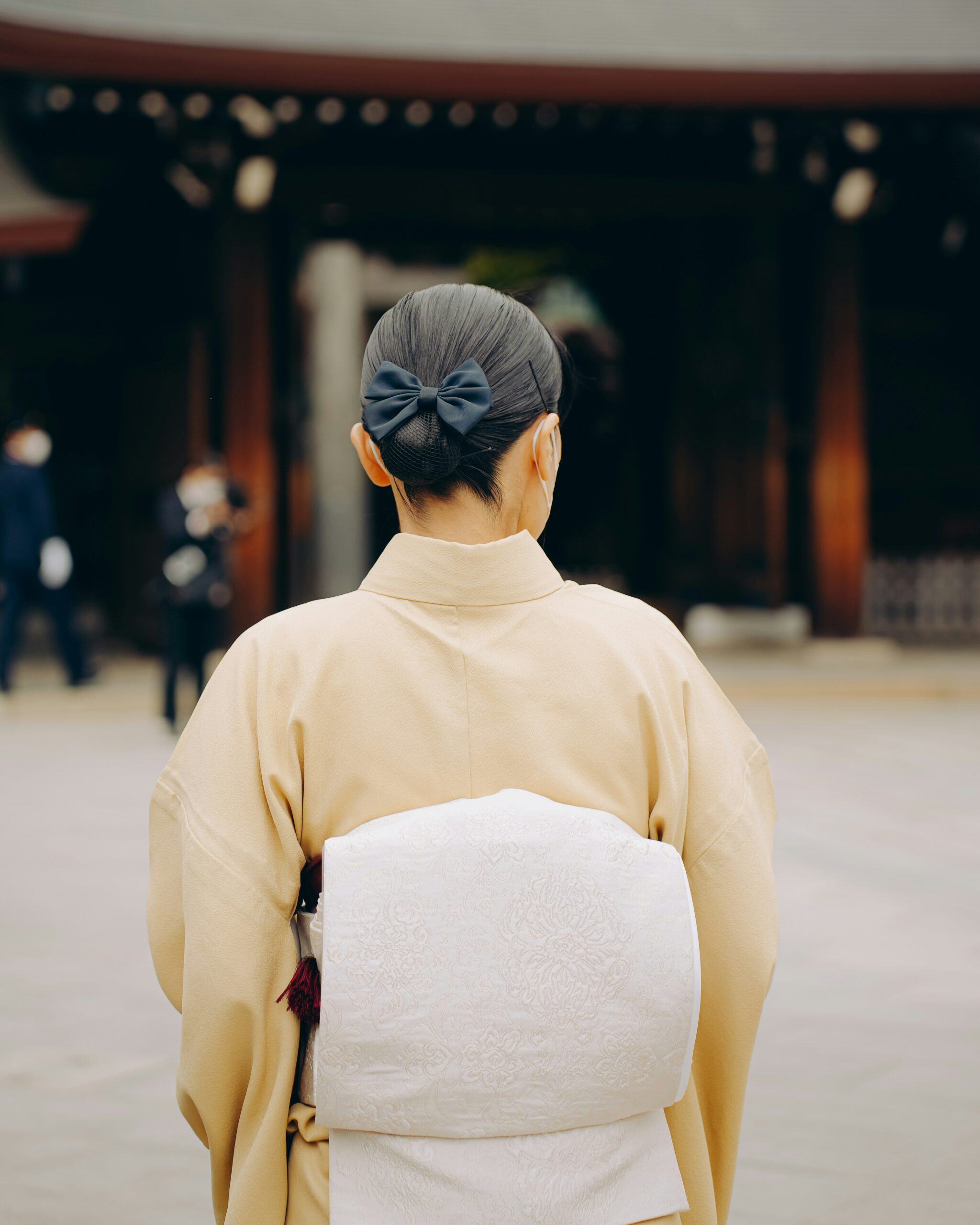
Traditional kimono and obi worn at Kiyomizu-dera Temple, Kyoto – showcasing the artistry of obi knot tying
Kyoto, the ancient capital of Japan, remains a living canvas of tradition. The city’s narrow lanes, wooden machiya townhouses, and temple gardens echo centuries of artistry. Among the many cultural treasures in Kyoto is the kimono tradition—where every fold, color, and accessory carries meaning. A central element is the obi—the sash that secures and adorns the kimono. But more than a simple belt, the obi’s knot (or musubi) is an art, rich in symbolism, formality, and aesthetic nuance.
In this post, we’ll dive deep into the meaning of different obi knots, how they are tied, their symbolic connotations, and how you can photograph them beautifully in Kyoto. I’ll also weave in how AllPhoto Kyoto can help you capture stunning moments of kimono and obi during your Kyoto visit.
1. What Is an Obi? Origins and Role in Kimono Dress
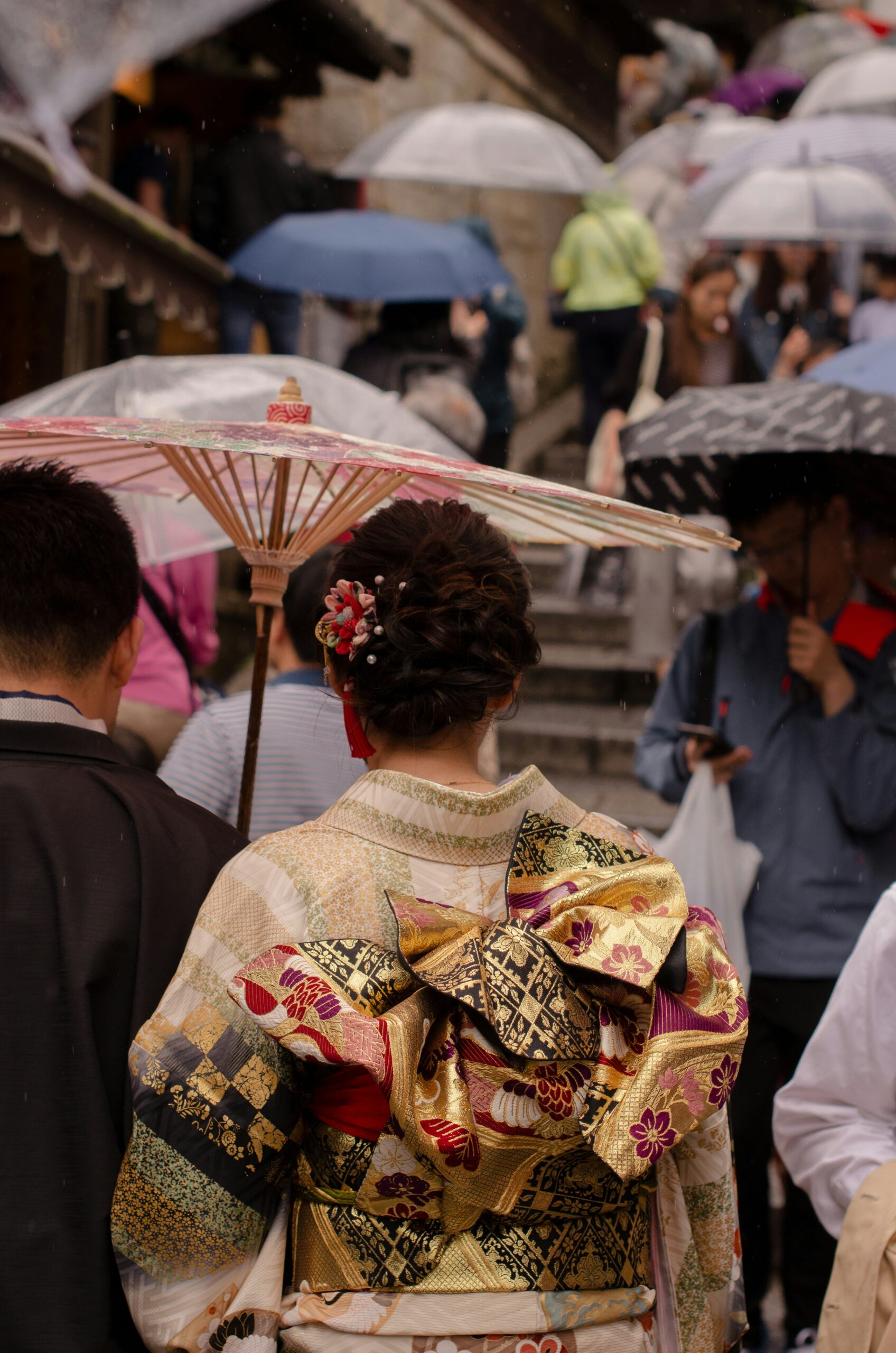
Traditional obi sash construction showing its functional and decorative importance in kimono dress
Before exploring knots, let’s understand what an obi is.
The obi is a wide sash or belt wrapped around the waist (or hips) over a kimono. Encyclopedia Britannica and Wikipedia describe its evolution from simple cords used in early Japan into broad, decorative sashes made of silk, brocade, or stiffened textiles. Women’s obi are typically much longer (often 3–4 meters or more) and wider than men’s obi.
The primary role of the obi is functional (to hold the kimono closed), but over time, it became highly decorative and a marker of formality and social status. MUSINGLY and Japan Objects Store note that in Kyoto, where textile craftsmanship (e.g. Nishijin weaving) is world-renowned, the obi becomes a focal point of aesthetic expression. The combination of fabric, pattern, color, and knot style embodies the wearer’s identity, the occasion, and regional taste.
2. Types of Obi in Kyoto Tradition
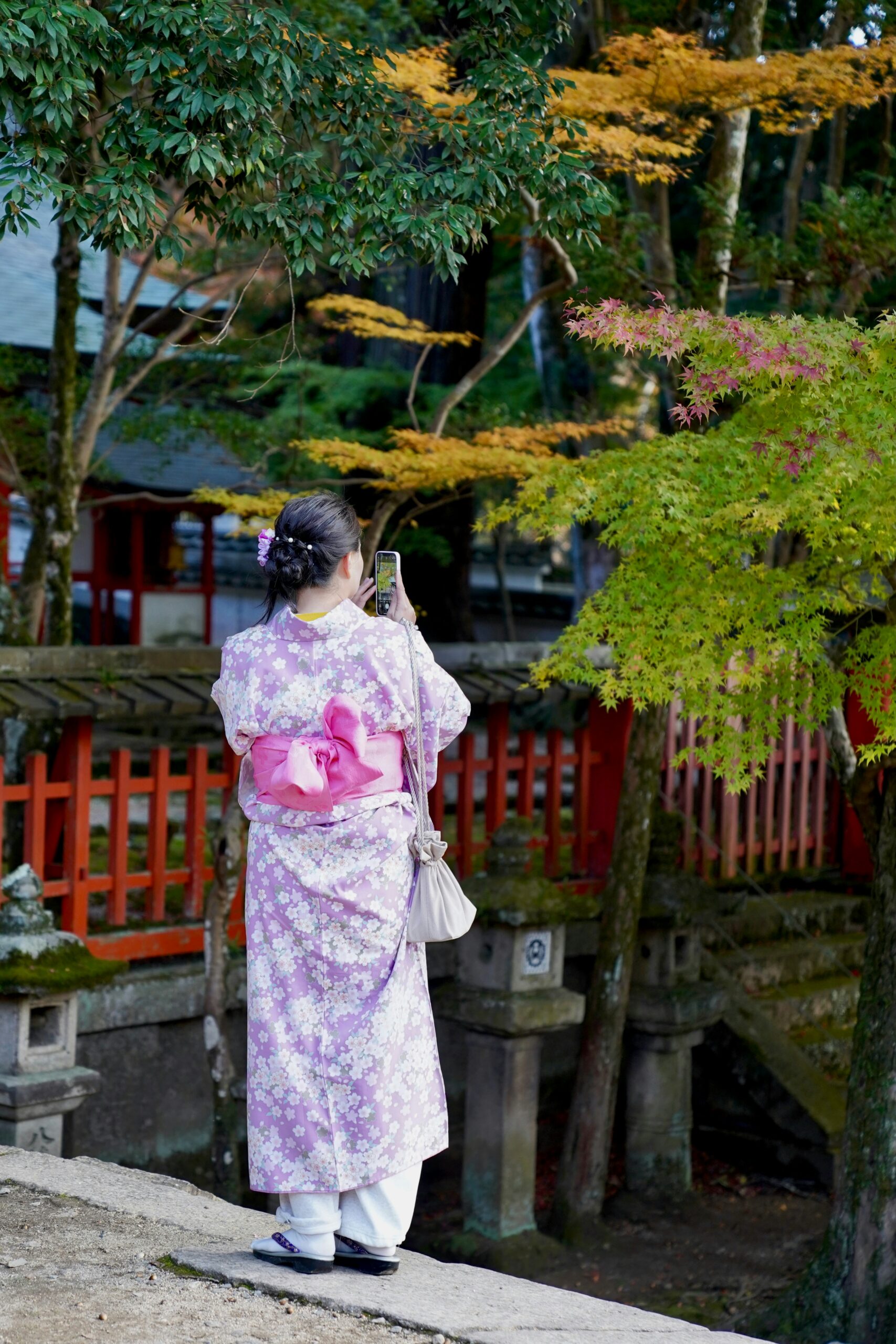
Various types of traditional Japanese obi showing different widths, patterns, and construction styles
Not all obi are the same. The type of obi influences the knot styles you can use. Some common ones include:
| Obi Type | Formality / Use | Key Traits |
|---|---|---|
| Maru Obi | Most formal (bridal, elite) | Fully patterned on both sides, often heavy and stiff. KimonoStudio Matsuno |
| Fukuro Obi | Formal / semi-formal | Lighter than maru obi, often patterned on visible side, backing plain fabric. KimonoStudio Matsuno |
| Nagoya Obi | Everyday / semi-formal | Easier to tie (single-layer in part), adapted in modern kimono culture. Okamoto Kimono and Buyee Blog |
| Hanhaba Obi | Casual / yukata | Narrower, informal, often used for festivals or summer attire. WAttention.com |
For example, the Nagoya obi was invented in Nagoya, but has become popular nationwide, including Kyoto, because it simplifies tying the taiko musubi (drum knot). The Fukuro obi is widely used today in Kyoto for formal kimono wear, balancing elegance and practicality.
Understanding which type your obi is will determine which knot styles are appropriate.
3. Common Obi Knots (Musubi) & Their Meanings
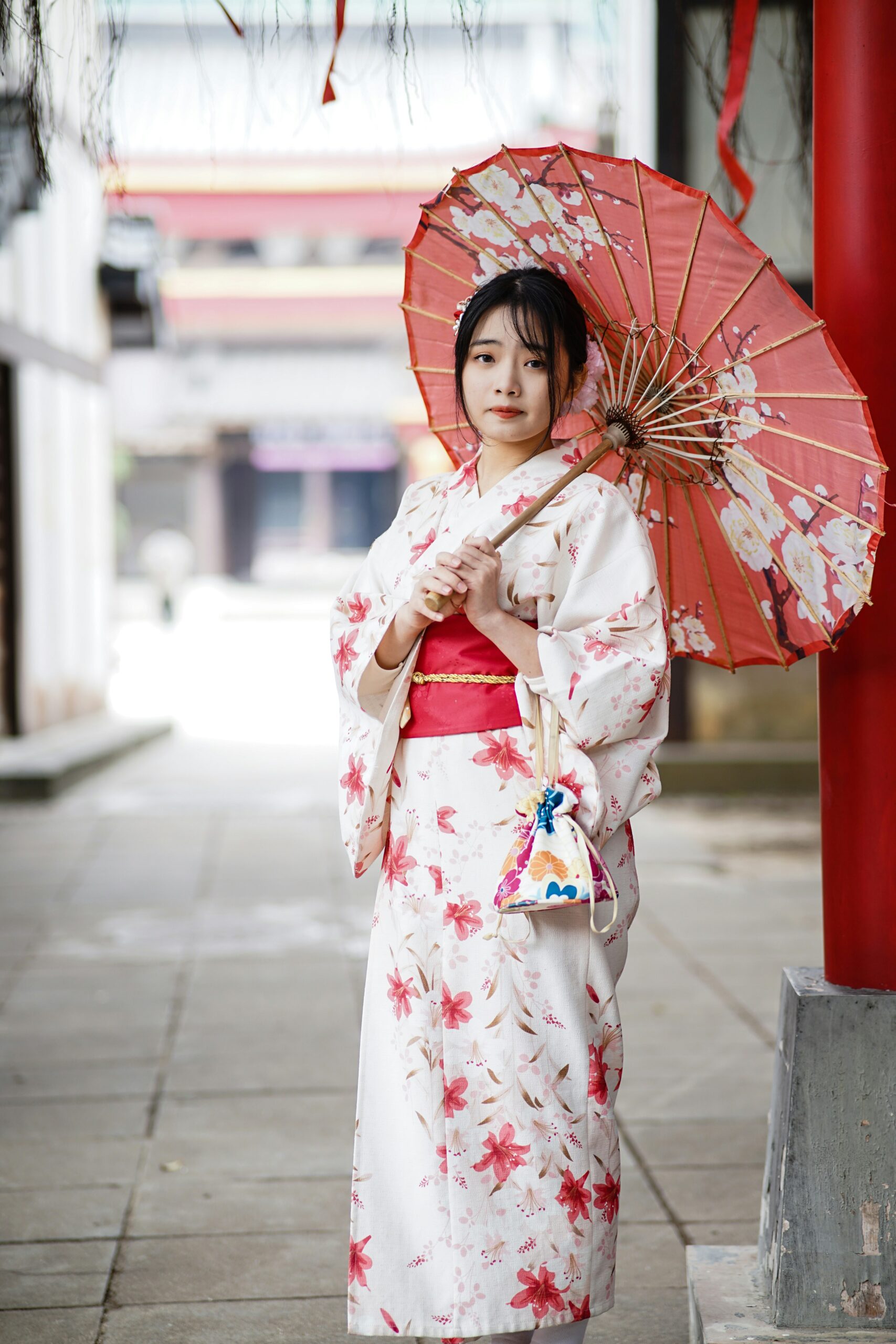
Taiko musubi (drum knot) – the most common formal obi knot, creating a distinctive box-like shape
Knots are not merely decorative. Each style carries subtle cues of formality, youth, marital status, and occasion. Below are several popular knots used in Kyoto and across Japan:
3.1 Taiko Musubi (Drum Knot)
The Taiko musubi (太鼓結び) is perhaps the most ubiquitous knot today, especially for married women or formal occasions. Tumblr and WAttention.com describe how it forms a box- or drum-like shape. Some variations include Hitoe-daiko (single-layer) or Futaae-daiko (double-layer). KimonoStudio Matsuno and Old Japan note that because of its balanced and conservative look, the Taiko musubi is acceptable in many formal to semi-formal settings in Kyoto’s cultural context.
3.2 Kai no Guchi (Clams’ Mouth Knot)
Kai no Guchi (貝の口結び) resembles a clamshell opening. It is more modest, neat, and somewhat understated. Tumblr notes it is often used for older women or occasions that require a less flashy presentation.
3.3 Butterfly Knot / Chō Musubi
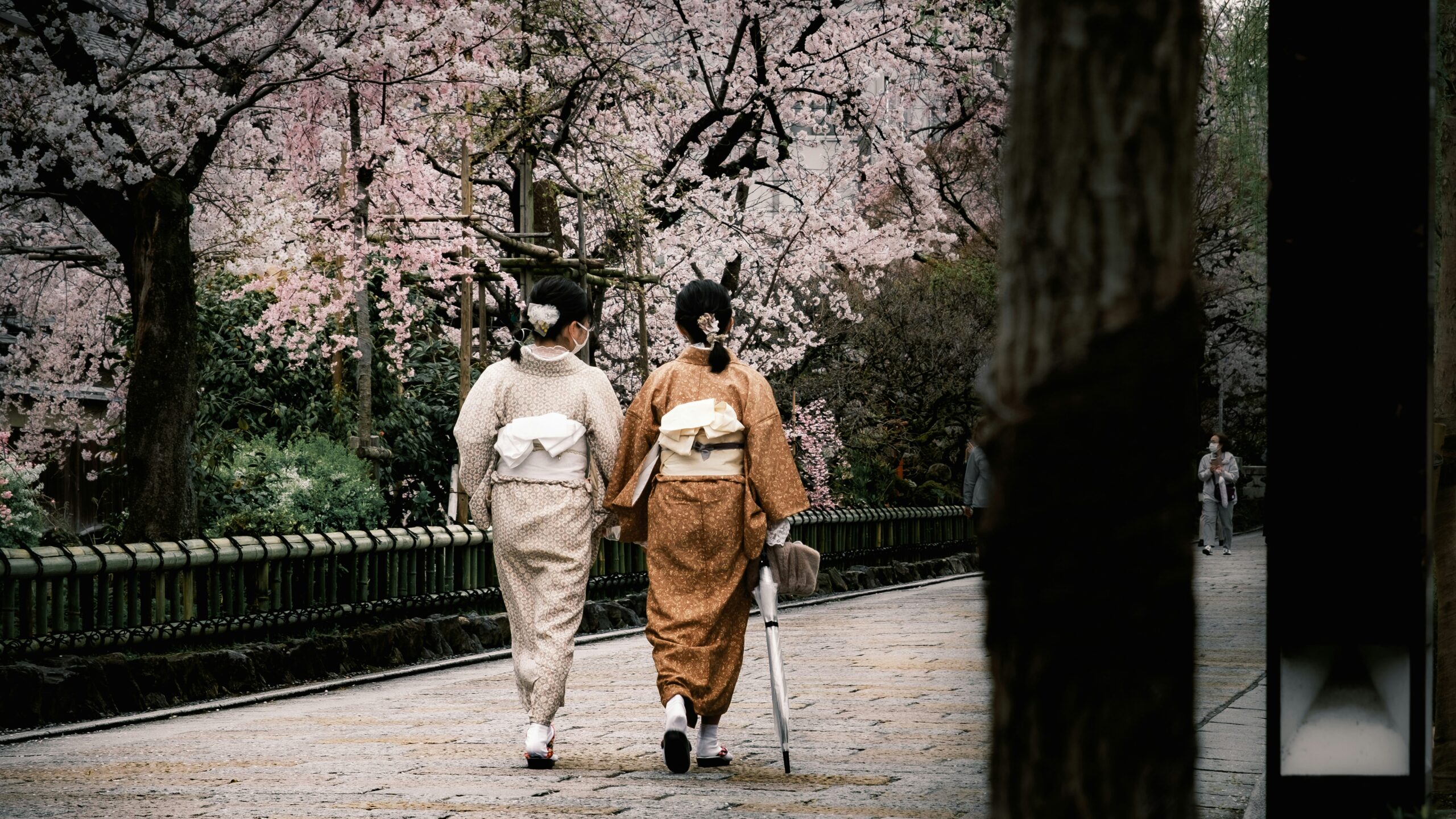
Chō musubi (butterfly knot) – a playful, youthful style with wing-like loops
The Butterfly knot (Chō musubi) is more playful and youthful, with flared loops that resemble butterfly wings. Wikipedia notes it’s often seen in more festive or celebratory contexts, or worn by younger women.
3.4 Bunko Musubi (Box / Ribbon Style)
Bunko musubi gives a boxy or ribbon-like shape. It is sometimes used for semi-formal wear. KimonoStudio Matsuno explains that because it’s less bulky, it’s a good stylistic choice when you want elegance but not too much volume on the back.
3.5 Fukurajaku and Other Decorative Knots
For highly decorative or formal wear, knots like Fukurajaku can be used. KimonoStudio Matsuno notes that in historical and theatrical contexts (e.g. geisha, maiko), knots with dangling “tails” or intricate folds (called darari knots) may appear. Wikipedia clarifies this.
Note: Many sources agree that the explicit “meaning” of knots (like representing virtues or stories) is less rigid in modern times. Their symbolism is more in the aesthetic, seasonal appropriateness, and demographic cue (age, marital status) than fixed allegory. Reddit and Wikipedia discuss this evolution.
4. Symbolism, Formality & Social Cues
When selecting an obi knot, people historically considered:
Formality of the event: Weddings, tea ceremonies, rituals call for more conservative, well-structured knots (e.g. taiko, futae-daiko).
Age and marital status: Younger or unmarried women might choose more flamboyant knots (butterfly, fukurajaku), while mature or married women often wear taiko.
Kimono type & sleeve length: A furisode (long-sleeved kimono) is often paired with more elaborate knots.
Balance and comfort: In Kyoto’s often hot, humid climate, knots that are lighter and less bulky help comfort, particularly in summer festivals.
Aesthetic harmony: The knot should harmonize with the obi fabric, kimono pattern, and overall silhouette from behind.
In Kyoto, these considerations are heightened because of the city’s refined traditional aesthetic. Visitors walking through Gion, Arashiyama, or Kiyomizu zones often wear kimono for photo shoots; the knot becomes a focal point in photographs and memory.
5. Step-by-Step: How to Tie a Simple Taiko Musubi
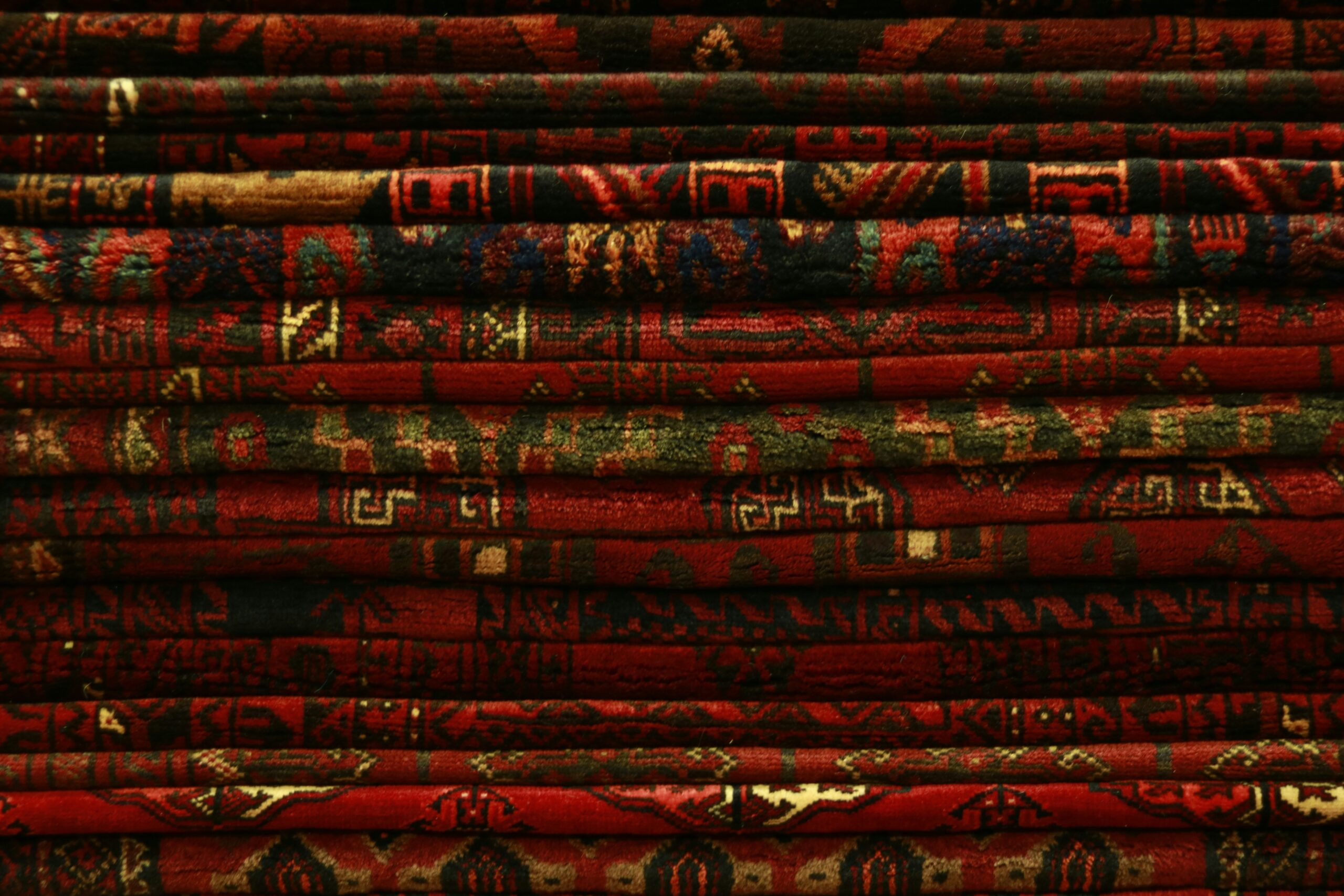
Step-by-step demonstration of obi tying process, showing the careful positioning and folding required
Here is a generalized process (for reference — local styles may vary):
- Wrap the obi around your waist (twice, depending on length), adjusting so that the front is smooth.
- Fold excess length to form the “tare” (dangling part) and “te” (short end) appropriately.
- Create the drum-shaped flap (the taiko) by folding and flattening.
- Tuck and tie any internal ties (such as using koshi-himo or obi-ita) to secure form.
- Adjust and flatten the surface, ensuring symmetry and neatness.
This process is best learned visually or with assistance—many kimono professionals in Kyoto help visitors with dressing.
6. How to Photograph an Obi Knot in Kyoto
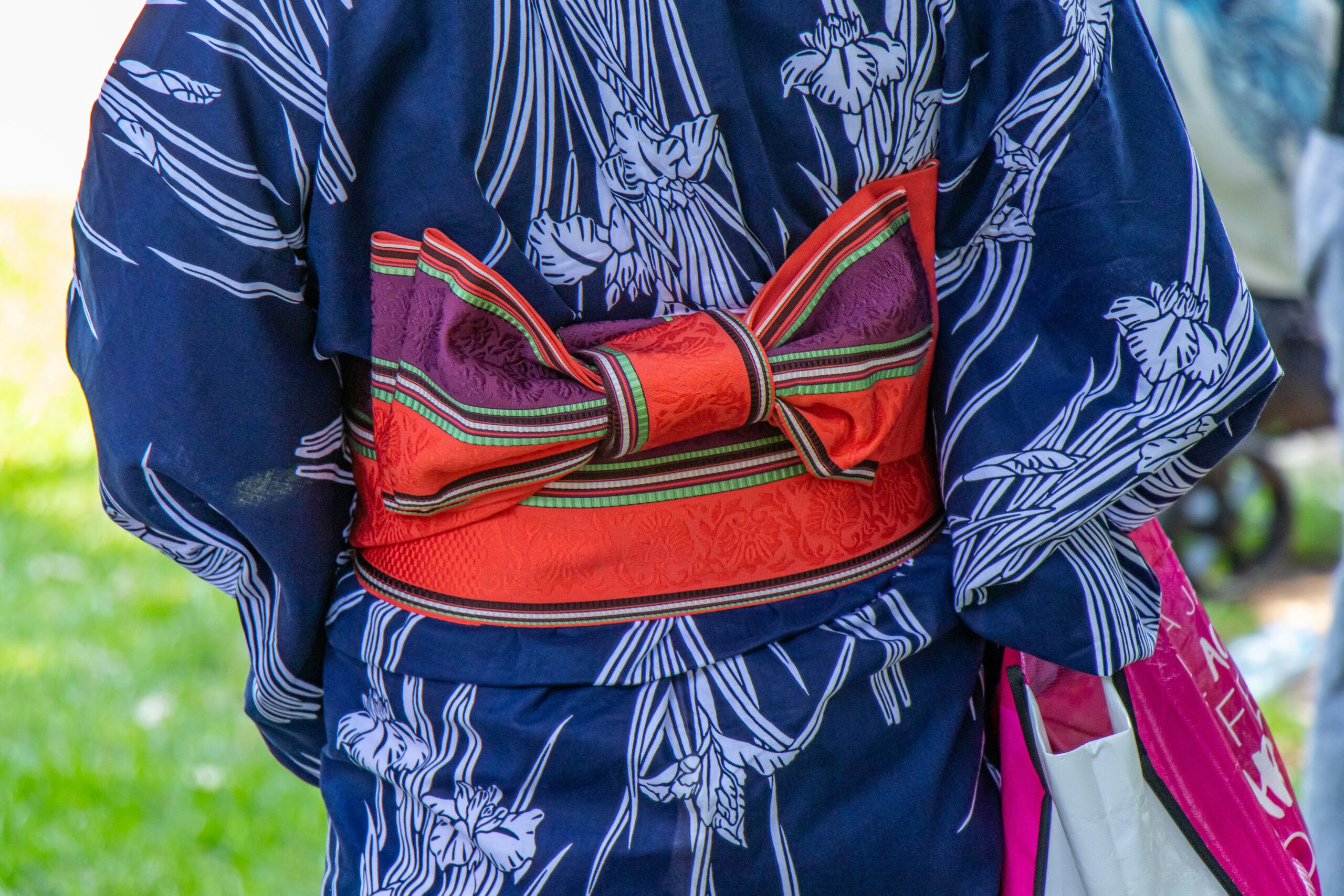
Professional kimono photography in Kyoto, showcasing how to capture obi details with scenic backgrounds
To really capture the elegance of obi knots, here are tips:
Back View Emphasis: Since knots are on the back, aim for shots from behind or slight angles that show the knot clearly against the kimono’s drape.
Use Shallow Depth-of-Field: Blur the background (temples, foliage, stone paths) to make the knot pop.
Golden Hour / Soft Light: Late afternoon or early morning yields flattering light on textiles, reducing harsh shadows.
Detail Close-Ups: Zoom in on the knot, highlighting folds, texture, and fabric sheen.
Context Scenes: Combine the knot shot with Kyoto scenery (temple gates, gardens, lanterns) to tell a cultural story.
Color Contrast: If the obi is vibrant or patterned, choose backgrounds of more neutral tones (stone, wood, moss) to avoid visual clash.
As a photography business located in Kyoto, AllPhoto Kyoto is perfectly positioned to help visitors and locals capture these beautiful kimono + obi moments. Whether you want a solo portrait in front of Kiyomizu, a couple session in Arashiyama, or a styled kimono shoot in Gion alleys, we can plan compositions that highlight the obi knot as a star.
7. SEO Strategy: Keywords, Structure, and Internal Linking
To ensure this blog post ranks well in Google, here’s how the structure and keyword usage should work:
Use keywords like “obi knot,” “kimono obi meaning,” “Kyoto kimono photography,” “obi tying styles” naturally (not forcefully).
Include secondary keywords such as musubi, taiko knot, Fukuro obi, Nagoya obi, kimono photography Kyoto.
Have several heading tags (H2, H3) to break content logically (as done above).
Insert external links to authoritative sources (e.g. JapanObjects, Britannica, kimono artisans), and internal links to your service pages (e.g. your photography service page).
Use images with alt text containing keywords, e.g. alt=”Taiko musubi obi knot Kyoto kimono.”
Aim for word count over 2000, varied sentence lengths, some bullet lists, and transitional phrases to improve readability metrics.
Given this post’s depth, it should score well on GrowthBar’s Content Optimization Meter (target ≥ 75%).
8. Practical Tips for Tourists & Kimono Enthusiasts in Kyoto
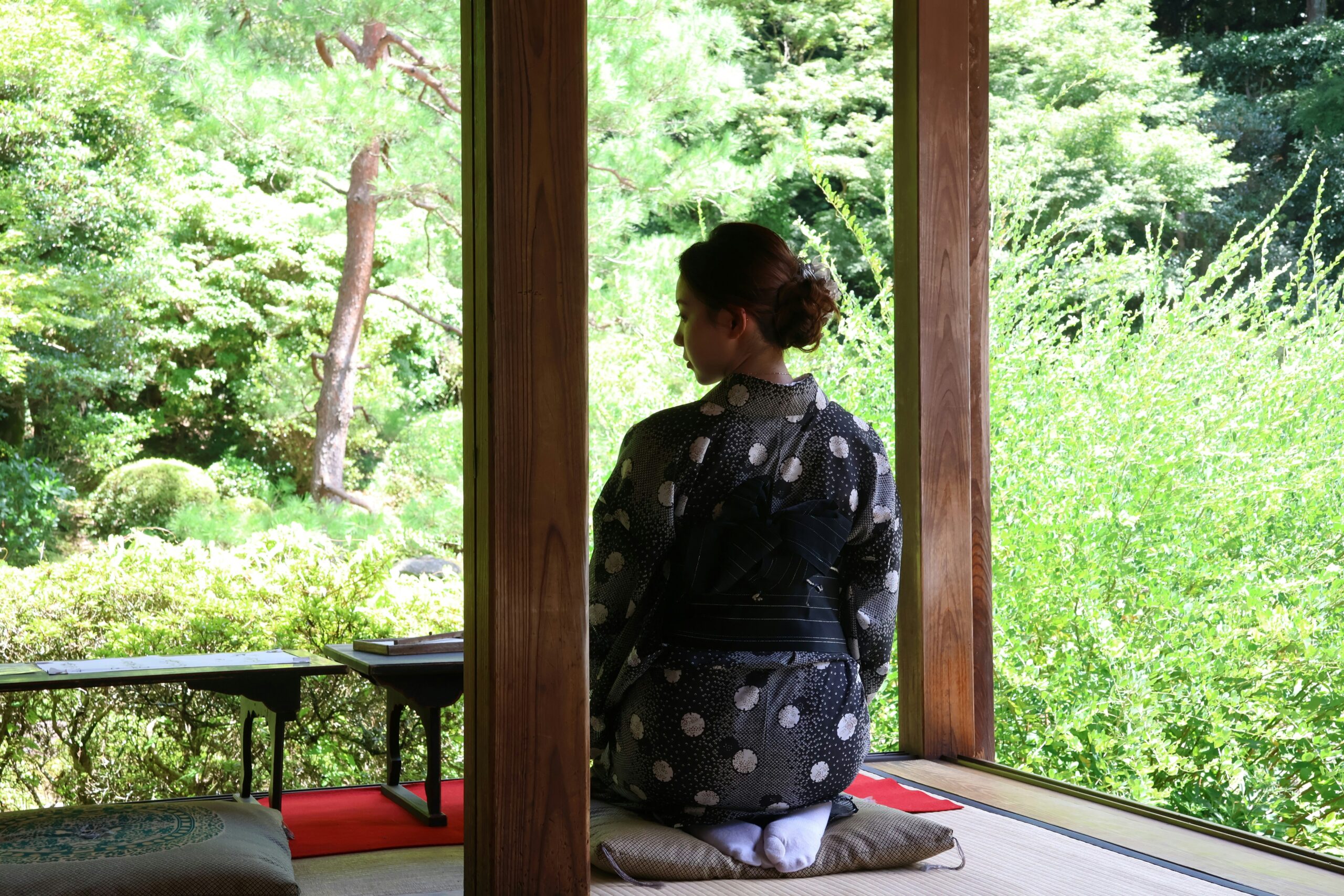
Authentic geisha in Kyoto’s historic district, showcasing traditional kimono and obi styling
When booking a kimono rental in Kyoto, ask if they assist with tying the obi knot or offer upgrades with special knots.
Walk through Kyoto’s historic districts (Higashiyama, Gion, Pontocho) in full kimono look—your obi will catch many glances and camera lenses.
For special occasions (tea ceremony, shrine visits), favor more conservative knots like taiko or kai no kuchi.
In summer, lighter obi fabrics and simpler knots help with comfort.
Bring or rent a mirror or ask a friend to check your knot symmetry from behind before stepping out.
If photographing, coordinate the knot color or pattern with seasonal elements (autumn foliage, cherry blossoms, mossy stones).
9. Sample Call-to-Action & Promotional Section
At AllPhoto Kyoto, we specialize in capturing kimono and obi artistry throughout Kyoto’s most iconic locations. Whether you want a refined kimono portrait at Fushimi Inari Shrine, wander through Gion’s lantern-lit alleys, or pose beside Arashiyama’s bamboo grove, we’ll curate your session to showcase your obi knot beautifully. Visit AllPhoto Kyoto to view portfolios, pricing, and book your kimono photography experience today.
By integrating this into the post (with a well-placed link), you drive traffic to your site and enhance your SEO internal linking.
10. Conclusion & Encouragement
The art of tying the obi is a wondrous blend of tradition, symbolism, and personal expression. In Kyoto, where heritage and beauty intertwine at every corner, the right knot can tell your story—whether you are a curious visitor or a devoted kimono lover.
From the dignified Taiko musubi to the playful Butterfly knot, each style has its moment. And when captured through the lens in Kyoto’s ethereal settings, the obi knot becomes more than a sash—it becomes a visual narrative.
I hope this guide helps you appreciate the nuance of obi knots, craft compelling blog content hereafter, and inspire you or your photography clients to create unforgettable kimono moments in Kyoto.


コメント